Value is the heart of every digital painting and matte painting. They create structure and depth, which ultimately determine how the image is perceived. In this tutorial, you will learn how to effectively use values to enhance your artworks and create the desired atmosphere. You will be shown techniques and strategies that will help you understand and apply the power of values.
Key Insights
Values form the foundation for all visual compositions. Even though colors play a crucial role, they are practically meaningless without the right values. You will learn how to strengthen the structure and depth of your images by deliberately modifying values.
Step-by-Step Guide
Understanding the Basics of Values
At the beginning, it is important to recognize the basics of values. They are not abstract concepts; they are the building blocks of your composition. They serve as the foundation upon which all other elements are built. To illustrate this, open an image and analyze it for its values.
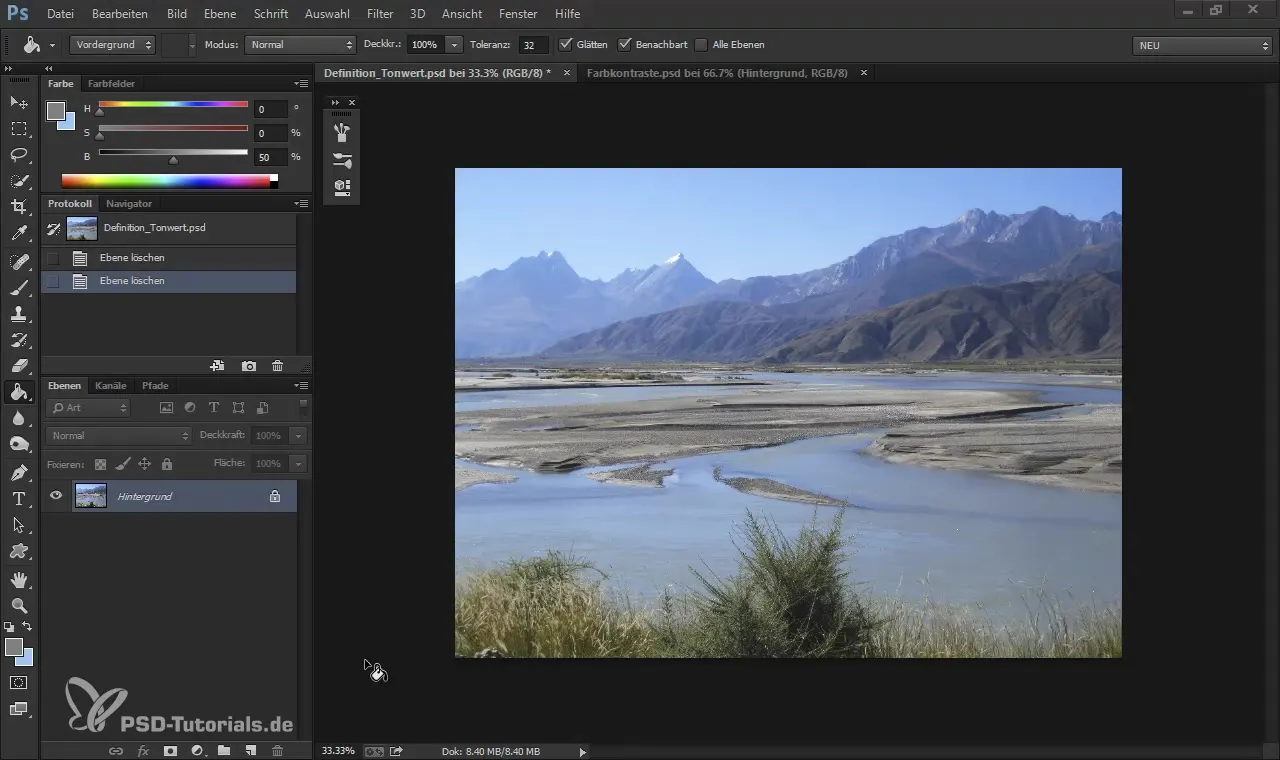
Applying an Adjustment Layer
To check and adjust the values of an image, create a new adjustment layer for Hue/Saturation. Drag the saturation down to zero to convert the image into a black-and-white image. This way, you can see the different shades of gray and the structure of your image.
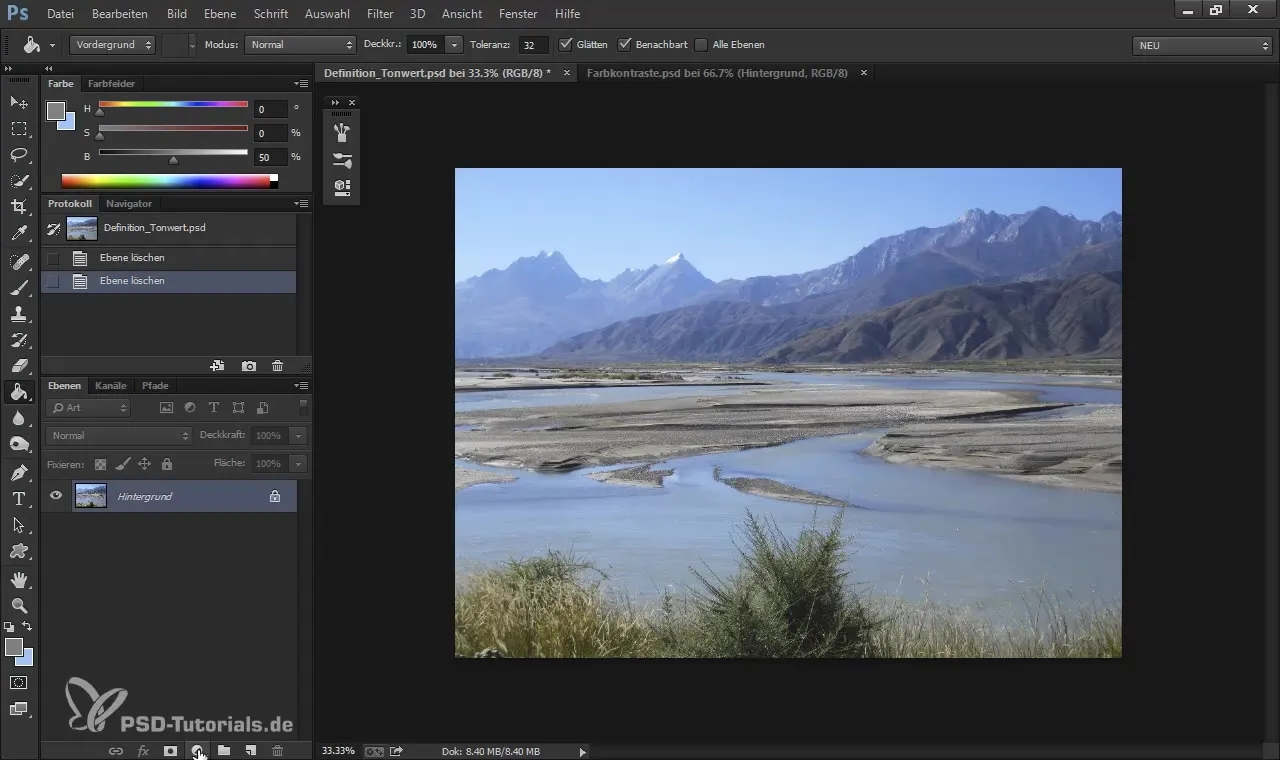
Observing the Values in the Image
Once you have removed the saturation from the image, it becomes easier to analyze the values. You can look at different areas of the image and recognize where the values are strong and where they are weak. This shows you the structural complexity of the image.
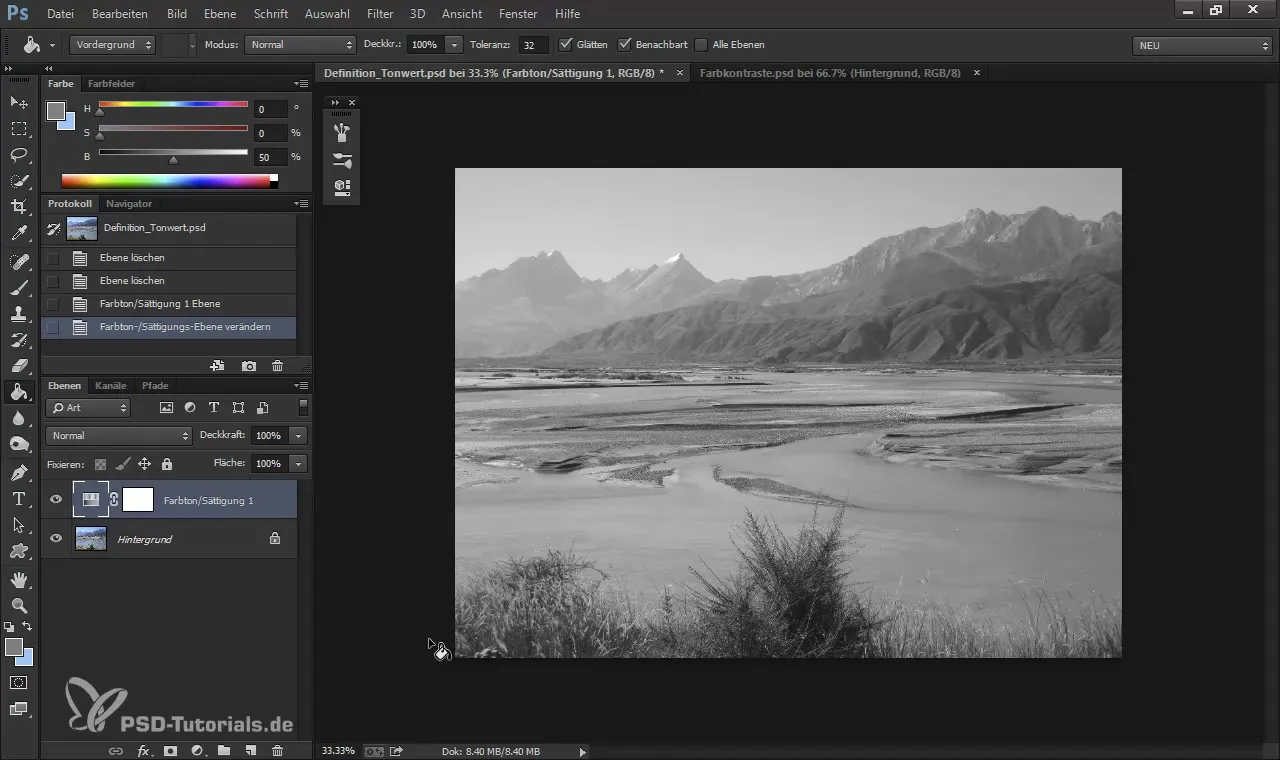
The Comparison of Foreground and Background
A critical aspect of working with values is the analysis of foreground and background. The deeper perspective often shows that the values in the background are lighter and less contrasted. This is a fundamental technique in atmospheric perspective, where distant objects tend to fade away.
Changing and Testing Values
To develop a better feel for values, experiment with the Hue/Saturation adjustment layer by varying the saturation. Make sure you do not lose brightness when changing the saturation. Check how the values change when you increase or decrease saturation.
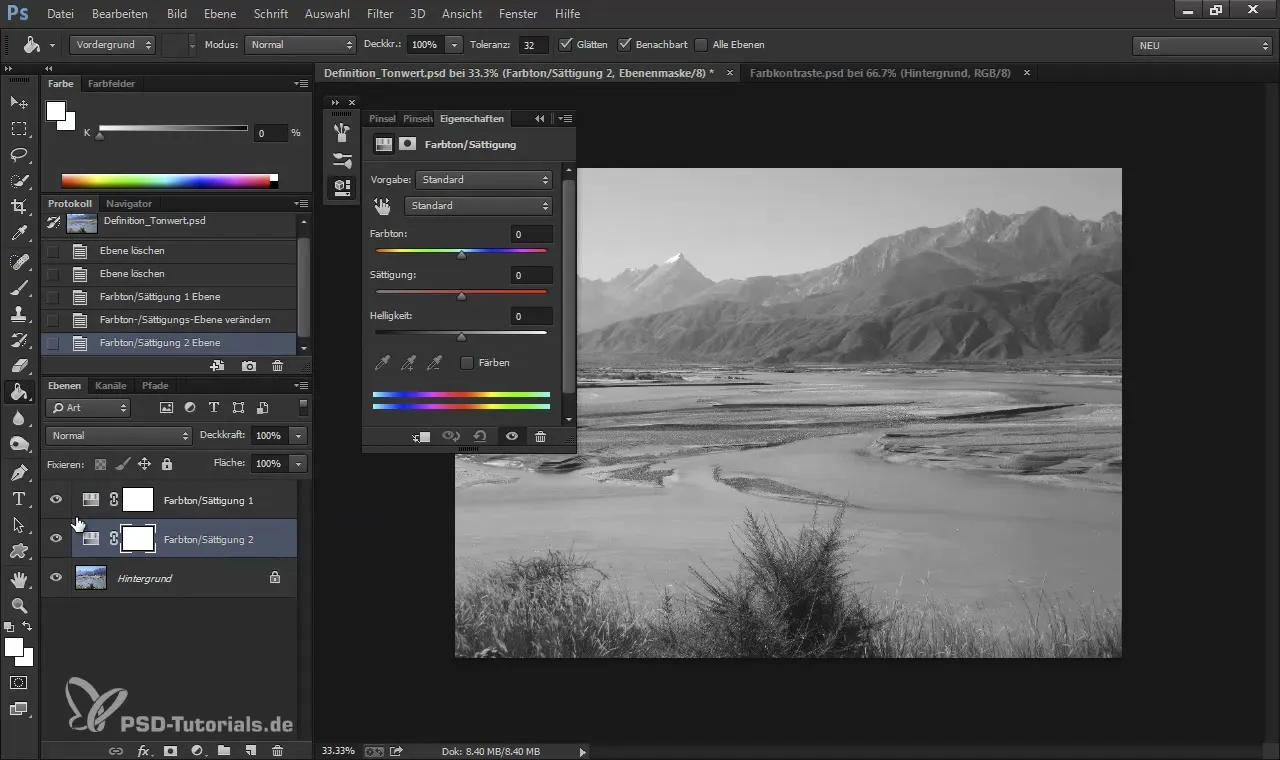
Analyzing the Lighting Conditions
Light plays a significant role in the perception of values. Consider how light affects the brightness and hue of objects. While dark objects that are closer often exhibit a more pronounced brightness, distant objects appear lighter. Keep this in mind when working with values to achieve realistic effects.
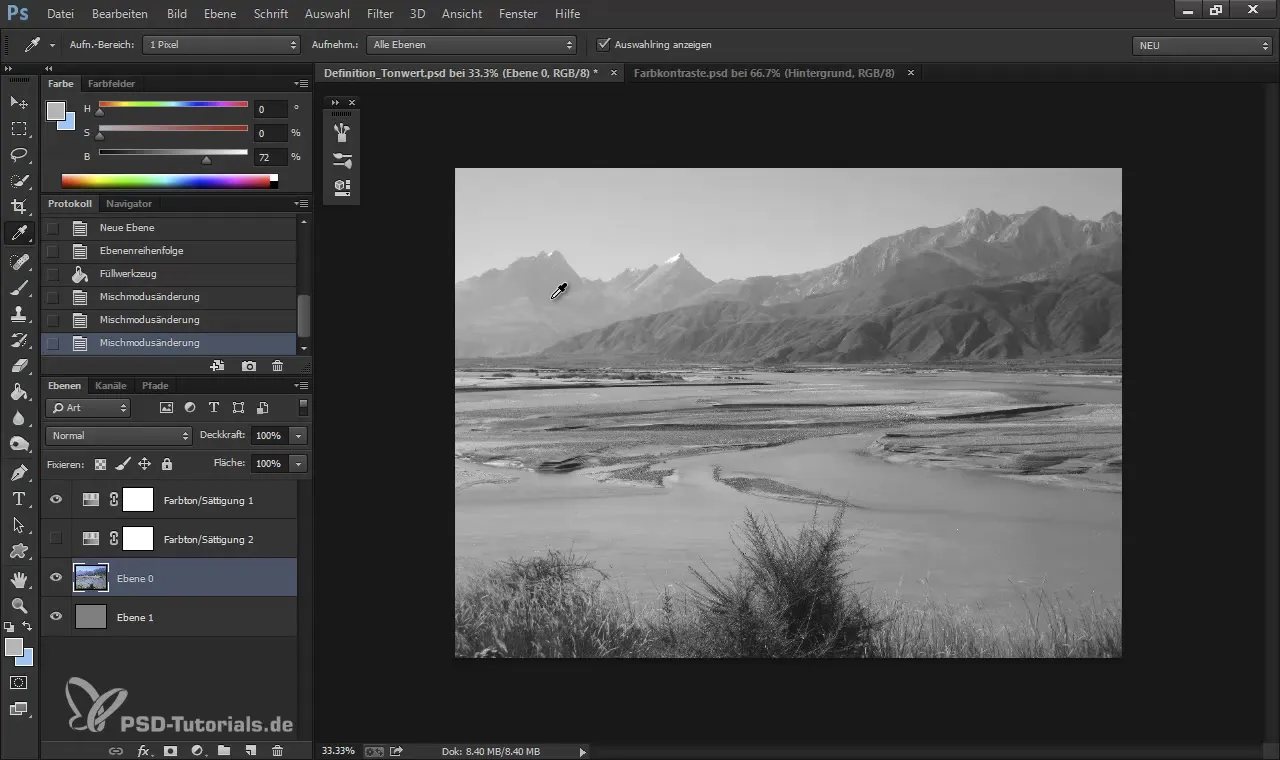
Establishing the Final Values
After experimenting with the various adjustments, gather your results. Consider which values best support the atmosphere and feeling you want to convey. Let colors take a backseat after establishing the values.
Summary – Digital Painting & Matte Painting: The Importance of Values
Working with values is essential if you want to master the fundamentals of digital painting and matte painting. The methods presented here equip you with the tools to introduce structure and depth into your artworks. Make sure you have a firm grasp on values before adding colors to achieve maximum visual effects.
Frequently Asked Questions
What role do values play in digital images?Values are the foundation upon which colors and details are built. They provide structure and depth.
How can I check the values in my image?Turn your image into black and white to analyze the shades of gray and the value contrast.
Why are lighting conditions important for values?Light influences the brightness and hue of objects, which changes the perception of values.
What is atmospheric perspective?Atmospheric perspective describes how objects in the distance appear fainter and lighter, which enhances depth in the image.
How can I improve my value analysis?Experiment with different settings in software like Photoshop and analyze how changes affect the overall presentation.


